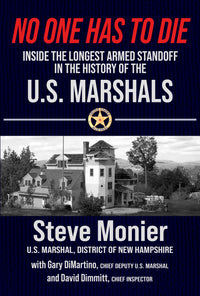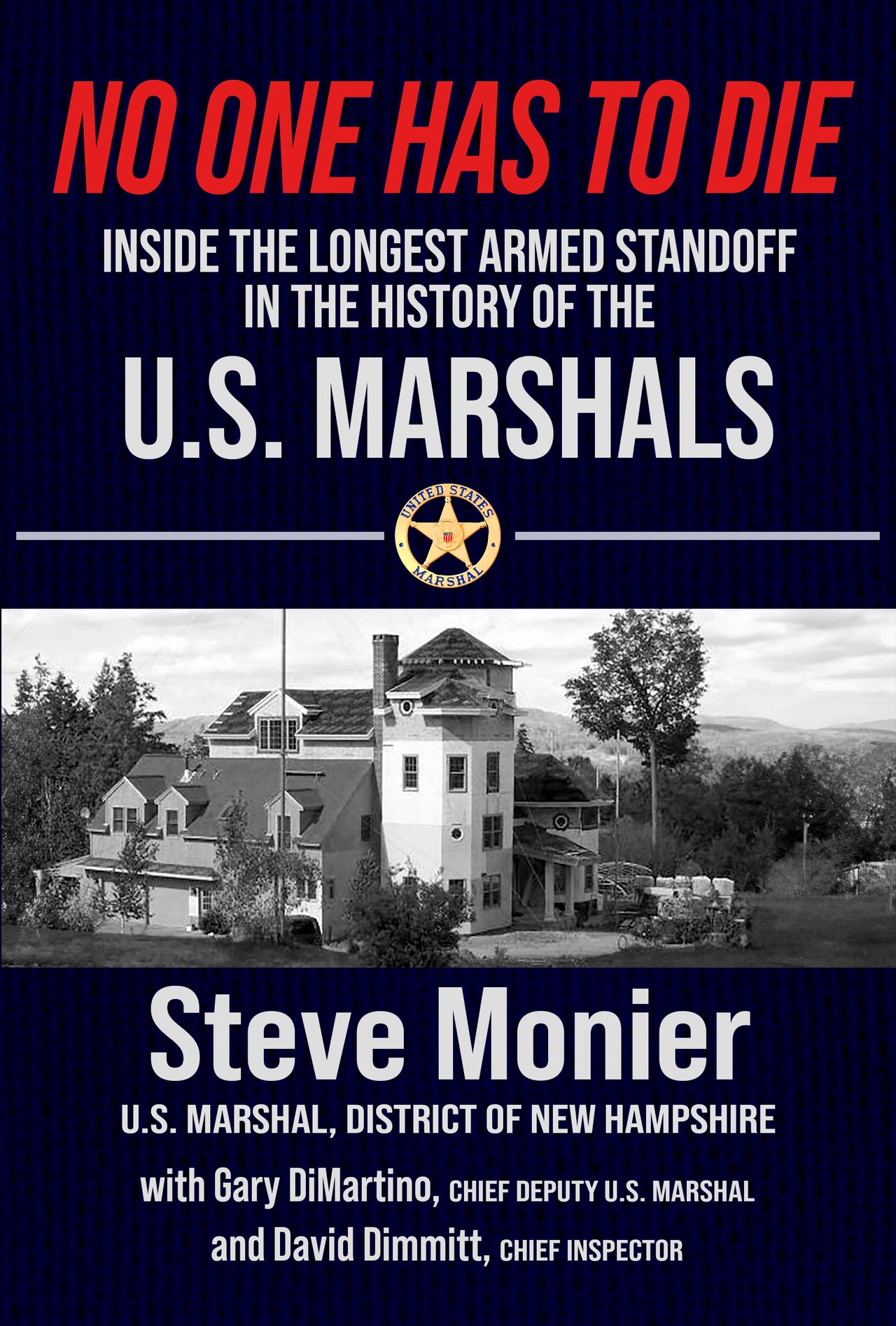No One Has To Die (Paperback)
$18.95USD




 Previous Product
Previous Product
 Next Product
Next Product
<?xml version="1.0" encoding="utf-8"?>
<!DOCTYPE html>
<html xml:lang="en" epub:prefix="z3998: http://www.daisy.org/z3998/2012/vocab/structure/" xmlns:epub="http://www.idpf.org/2007/ops" xmlns="http://www.w3.org/1999/xhtml" lang="en">
<head>
<title>Chapter 1: Not Just Another Day…</title>
<style>
/*
* My Book
* Stylesheet generated by Vellum
*/
p {
margin-bottom: 0px;
text-indent: 0px;
margin-top: 0px;
text-align: justify;
}
p.subsq {
text-indent: 1.5em;
}
.basic-break {
margin-top: 1.4em;
margin-bottom: 0em;
height: 0em;
}
div.refnote-batch {
font-size: 90%;
}
.toc-item {
margin-bottom: 0.1em;
}
div.alignment-block.inset-block {
margin-right: 1.5em;
margin-left: 1.5em;
}
blockquote {
margin-right: 1.5em;
margin-left: 1.5em;
}
blockquote.verse {
padding-left: 3em;
padding-right: 3em;
}
p.blockquote-content-verse {
padding-left: 1.5em;
margin-top: 0px;
text-indent: -1.5em;
}
ul, ol {
padding-left: 3em;
padding-right: 1.5em;
}
.section-title {
font-size: 100%;
}
sub, sup {
font-size: 0.75em;
}
p.bibliography-content, li.bibliography-content {
font-size: 90%;
}
p.copyright-content, li.copyright-content {
font-size: 90%;
}
p.also-by-content, li.also-by-content {
font-size: 90%;
}
p, li {
hyphens: auto;
-webkit-hyphenate-limit-lines: 2;
-webkit-hyphenate-limit-after: 4;
-webkit-hyphenate-limit-before: 4;
}
.scene-break {
margin-bottom: 1.4em;
clear: both;
margin-top: 0em;
height: 1.4em;
}
body {
/* font-family: Palatino, serif;*/
font-weight: normal;
font-style: normal;
font-size: 1.25em;
}
h1, h2, h3, h4 {
margin-top: 0px;
margin-right: 0px;
margin-bottom: 0px;
margin-left: 0px;
page-break-inside: avoid;
font-kerning: auto;
}
a {
text-decoration: underline;
}
a.link-contains-image {
text-decoration: none;
}
.text-is-url {
hyphens: none;
overflow-wrap: break-word;
}
.section-title {
margin-top: 1.4em;
padding-top: 0.7em;
margin-bottom: 0.7em;
}
.section-title.keep-with-next.paragraph-follows {
margin-bottom: 0px;
padding-bottom: 0.7em;
}
blockquote {
margin-top: 1.4em;
margin-bottom: 1.4em;
}
blockquote.with-attribution {
margin-bottom: 2.1em;
}
p.blockquote-content-verse {
text-align: left;
}
p.blockquote-attribution {
margin-top: 0.7em;
text-align: right;
margin-left: 15%;
}
ul, ol {
margin-top: 1.4em;
margin-bottom: 1.4em;
}
p.subsq.continues-interrupted-paragraph {
text-indent: 0px;
}
hr {
border-top-style: none;
border-right-style: none;
border-bottom-style: none;
border-left-style: none;
}
.implicit-break, .ornamental-break {
page-break-inside: avoid;
}
.page-break {
page-break-before: always;
margin-top: 2.8em;
}
.alignment-block, blockquote, .ornamental-break, .inline-image, .refnotes-addendum {
clear: both;
}
ul, ol {
clear: left;
}
li {
text-align: left;
}
sub, sup {
margin-left: 0.05em;
}
span.smallcaps {
font-variant: small-caps;
font-variant-alternates: initial;
font-variant-numeric: normal;
font-variant-east-asian: initial;
font-variant-position: initial;
letter-spacing: 0.04em;
font-variant-ligatures: none;
}
span.strikethrough {
text-decoration: line-through;
}
span.underline {
text-decoration: underline;
}
img.low-res {
display: none;
}
div.refnotes-separator {
clear: both;
}
div.refnotes-separator {
margin-top: 1em;
padding-bottom: 1em;
}
div.refnotes-separator.rule {
border-top-width: 1px;
border-top-style: solid;
border-top-color: initial;
margin-left: 20%;
margin-right: 20%;
}
div.refnotes-separator.rule {
border-top-color: rgb(102, 102, 102);
border-right-color: rgb(102, 102, 102);
border-bottom-color: rgb(102, 102, 102);
border-left-color: rgb(102, 102, 102);
}
.endnotes-section-title {
text-align: center;
}
a.refnote-backlink {
font-weight: bold;
}
p.dedication-content {
text-align: center;
text-indent: 0px;
}
p.dedication-content {
font-style: italic;
}
.element-type-dedication.element-without-heading {
margin-top: 10em;
}
.element-type-epigraph.element-without-heading {
margin-top: 10em;
}
p.also-by-content {
text-indent: 0px;
text-align: center;
}
p.also-by-content, p.also-by-content.alignment-block-content {
margin-top: 0.5em;
}
.toc-contents {
padding-left: 5%;
padding-right: 5%;
}
p.toc-content {
text-align: left;
}
.toc-item {
page-break-inside: avoid;
}
.toc-item-number {
padding-right: 0.3em;
text-indent: 0px;
padding-left: 0px;
}
.toc-item-children {
margin-left: 1.5rem;
margin-bottom: 0.5em;
}
.toc-group-chapter {
margin-top: 0.5em;
}
.toc-frontmatter-group {
margin-bottom: 0.75em;
}
.toc-backmatter-group {
margin-top: 0.75em;
}
.toc-item-entry-type-volume.has-children {
margin-top: 0.75em;
}
.toc-item.has-author {
margin-bottom: 0.5em;
}
.toc-item-author, .toc-item-subtitle {
margin-top: 0.1em;
}
.toc-item-subtitle {
font-style: italic;
}
p.toc-content {
font-size: 90%;
}
p.toc-content.toc-item-author, p.toc-content.toc-item-subtitle {
font-size: 75%;
}
.toc-item-number {
font-size: 80%;
}
p.copyright-content {
text-indent: 0px;
text-align: left;
margin-top: 0.75em;
}
.element-type-copyright.element-without-heading {
margin-top: 2.5em;
}
.created-with-vellum-image-decorator {
display: inline-block;
float: left;
padding-right: 0.25em;
margin-top: 0.125em;
}
.created-with-vellum-image-size-container, img.created-with-vellum-image {
height: 1em;
}
img.created-with-vellum-image {
width: auto;
}
div.title-page, section.title-page {
text-align: center;
}
div.title-page-title-subtitle-block {
min-height: 140px;
margin-top: 140px;
}
div.title-page-title-subtitle-block {
margin-bottom: 2em;
}
h1.title-page-title, h2.title-page-subtitle, p.title-page-series-name, p.title-page-series-position, h2.title-page-contributor, h2.title-page-publisher {
font-weight: normal;
text-align: center;
margin-top: 0px;
margin-right: 0px;
margin-bottom: 0px;
margin-left: 0px;
}
h1.title-page-title {
font-size: 150%;
}
h2.title-page-subtitle {
margin-top: 0.5em;
font-size: 100%;
margin-bottom: 1.5em;
}
div.title-page-series-info {
margin-top: 0.35em;
}
p.title-page-series-name {
font-size: 100%;
}
p.title-page-series-position {
margin-top: 0.25em;
font-size: 90%;
}
div.title-page-contributor-block {
min-height: 80px;
margin-bottom: 1.5em;
}
div.title-page-contributor-secondary-block {
margin-top: 1.5em;
}
h2.title-page-contributor-without-introduction {
margin-bottom: 0.5em;
}
h2.title-page-contributor-with-introduction {
margin-bottom: 0.75em;
}
h2.title-page-contributor-primary {
font-size: 120%;
}
h2.title-page-contributor-secondary {
font-size: 100%;
}
span.title-page-contributor-introduction {
display: block;
margin-bottom: 0.25em;
font-size: 90%;
}
.titlepage-ornament-size-container {
display: inline-block;
}
div.title-page-publisher-logo-size-container {
display: inline-block;
}
div.title-page-publisher-logo-block {
display: inline-block;
}
h2.title-page-publisher {
font-size: 80%;
}
p.blockquote-attribution::before {
content: "— ";
}
.heading-alignment-flexible {
text-align: left;
}
p.also-by-content {
text-align: left;
}
.heading-size-full {
min-height: 11em;
}
.heading {
margin-bottom: 2em;
}
.heading-container-group {
margin-bottom: 3em;
}
.heading-container-group {
min-height: 15em;
}
.heading-image-size-container {
display: inline-block;
}
.heading-ornament-size-container {
display: inline-block;
}
.heading-alignment-fixed {
margin-left: 6%;
margin-right: 6%;
text-align: center;
}
.heading-size-medium {
min-height: 6em;
}
.section-title {
font-size: 110%;
}
h1.title-page-title {
font-size: 140%;
}
h2.title-page-subtitle {
margin-top: 0.5em;
font-size: 108%;
}
p.title-page-series-name {
font-size: 108%;
}
p.title-page-series-position {
font-size: 100%;
}
div.title-page-contributor-secondary-block {
margin-top: 2em;
}
span.title-page-contributor-introduction {
margin-right: 0.1em;
}
div.ornamental-break {
text-align: center;
}
div.ornamental-break-block, div.ornamental-break-size-container {
display: inline-block;
}
p.ornamental-break-as-text {
text-align: center;
text-indent: 0px;
}
p.ornamental-break-as-text {
display: none;
}
div.ornamental-break {
margin-top: 1.4em;
margin-bottom: 1.4em;
}
div.alignment-block {
margin-top: 1.4em;
margin-bottom: 1.4em;
}
div.alignment-block.keep-with-next.paragraph-follows {
margin-bottom: 0px;
padding-bottom: 1.4em;
}
p.alignment-block-content {
text-indent: 0px;
margin-top: 0em;
}
p.alignment-block-content-left {
text-align: left;
}
p.alignment-block-content-center {
text-align: center;
}
p.alignment-block-content-right {
text-align: right;
}
</style>
</head>
<body>
<div id="chapter-1" class="element element-bodymatter element-container-single element-type-chapter element-with-heading" role="doc-chapter" epub:type="chapter">
<div class="heading heading-container-single heading-size-full heading-format-full heading-alignment-flexible heading-without-image">
<div class="heading-contents">
<div class="title-subtitle-block title-block-with-element-number">
<div class="element-number-block">
<div class="element-number case-mixed"><span class="element-number-term">Chapter</span> <span class="element-number-number">1</span></div>
</div>
<div class="title-block">
<h1 class="element-title case-mixed">Not Just Another Day…</h1>
</div>
</div>
</div>
</div>
<div class="text" id="chapter-1-text">
<p class="first first-in-chapter first-full-width"><span class="first-phrase">U.S. Marshal Stephen Monier</span> arrived at his desk at approximately eight a.m. on Friday, January 12, 2007. This was going to be the fourth day of the trial for Ed and Elaine Brown of Plainfield, New Hampshire, on felony charges for conspiracy to commit federal income tax violations. The government had a very strong case, and the Browns were representing themselves.</p>
<p class="subsq">A friend sympathetic to their cause, Michael Avery, from the suitably named Outlaw Legal Services of Florida, was serving as a “paralegal.” He had helped Ed and Elaine prepare all their pre-trial motions. He was seated at the defense table to “advise them.” The Browns had rejected any representation by an attorney.</p>
<p class="subsq">It wasn’t going well for the Browns. Ed Brown’s spurious arguments against having to pay federal income taxes were rejected by the court, and his theories on the federal tax laws were shut down by presiding Judge Steven McAuliffe at several points. The government’s witnesses were showing that Ed and Elaine had stopped paying their taxes in 1996 and owed more than $625,000 in unpaid income tax. They were also charged with structuring, the intentional manipulation of financial transactions to evade reporting requirements.</p>
<p class="subsq">As was his custom on getting to the office, Marshal Monier checked in with the control room upon arrival and spoke with the two court security officers manning the cameras and other systems monitoring courthouse activity that day. All was quiet, they said.</p>
<p class="subsq">Marshal Monier and his chief deputy, Gary DiMartino, were both concerned about this trial. The U.S. Marshals Service (USMS) had deemed that the trial was “high risk” given that Ed Brown, a self-described “retired exterminator,” had become a leader in the militia group, U.S. Constitution Rangers. Membership in the rangers had grown in the aftermath of federal law enforcement’s attempts to serve arrest warrants at Ruby Ridge in Idaho and at the Branch Davidian compound in Waco, Texas. Chief DiMartino and Inspector Brenda Mikelson had ordered extra courtroom security and intelligence gathering for the trial. They had ensured that court security officers were being extra vigilant in screening people involved with, or attending, the trial in the U.S. District Court in Concord, New Hampshire.</p>
<p class="subsq">Marshal Steve Monier and Chief DiMartino had worked together for the past five years in the District of New Hampshire. Chief DiMartino was a career deputy U.S. marshal who had risen through the ranks to become a chief deputy in the Marshals Service, the number two person in every one of the ninety-four district offices of the USMS.</p>
<p class="subsq">Deputy U.S. marshals are highly trained federal law enforcement officers, not unlike career FBI, ATF, and IRS agents. They apply for open positions in the Marshals Service, take written and physical exams, and are subjected to background investigations prior to being hired. They attend, and must successfully complete, the USMS Academy and other advanced training programs throughout their career.</p>
<p class="subsq">Gary DiMartino began his law enforcement career in a Rhode Island police department before applying for, and beginning, his calling with the USMS.</p>
<p class="subsq">Because he had served in several supervisory positions on both the East and West Coasts during his long tenure with the agency and had taught at the Federal Law Enforcement Training Academy in Glynco, Georgia, he was a highly respected and well-known chief in the USMS. Marshal Monier considered him a very qualified, competent, and professional member of the service and was pleased that when President George W. Bush had nominated him to become the U.S. Marshal for the District of New Hampshire, Gary was his chief deputy.</p>
<p class="subsq">Unlike the deputy U.S. marshals, who form the corps or “backbone” of the USMS, each U.S. marshal (USM) who heads the district offices of the USMS is nominated by the President of the United States and must be confirmed by the U.S. Senate before taking the oath of office. This has been the case since the U.S. Marshals Service was created in 1789 by the 1<sup>st</sup> Congress of the newly formed United States government.</p>
<p class="subsq">When the 1<sup>st</sup> Congress of the United States stood up the federal judiciary, they realized there was no agency to enforce court orders, apprehend offenders, or help run the court system. In the Judiciary Act, the 1<sup>st</sup> Congress created the United States Marshals Service, with each marshal in each district to be appointed by the president with the “advice and consent” of the United States Senate.</p>
<p class="subsq">President George Washington swore in the first thirteen U.S. marshals, including the first marshal of the District of New Hampshire, in 1789. The U.S. Marshals Service is our republic’s oldest federal law enforcement agency, with the broadest of authority in enforcing federal law and orders from the U.S. courts. For over 234 years, the U.S. Marshals have done everything from protecting the courts, to taking the census, to protecting the President of the United States.</p>
<p class="subsq">In the twenty-first century, their core mission is the protection of the U.S. courts, enforcing court orders, apprehending fugitives, running the witness protection program, finding missing or abducted children, and taking the lead on enforcing the provisions of the Adam Walsh Act to track and monitor convicted sex offenders.</p>
<p class="subsq">Congress and the U.S. Department of Justice made several legislative and administrative changes to how the work of the USMS was conducted over the decades, and in particular, in the twentieth century. Originally, each U.S. marshal could appoint his own deputies as needed, to carry out orders from the court.</p>
<p class="subsq">As David S. Turk, the official historian of the Marshals Service, noted in his seminal work entitled <i>Forging the Star</i>,<i> </i>“[L]ong after gaining their Old West reputation with personnel such as Seth Bullock, Wyatt Earp, Bass Reeves, Bat Masterson, and Heck Thomas, U.S. Marshals and their deputies followed a winding trail of transition.”?<sup class="main-text-refnote-cue"><a href="notes.xhtml#chapter-1-endnote-1-text" id="chapter-1-endnote-1" class="refnote-marker marker-format-roman-lower endnote-cue roman-lower-i" role="doc-noteref" epub:type="noteref">i</a></sup></p>
<p class="subsq">At approximately nine-thirty on that Friday morning, Chief DiMartino stuck his head into the marshal’s office and said, “Marshal, Ed and Elaine failed to show up this morning for the continuation of their trial.”</p>
<p class="subsq">It was a decisive moment in the long run-up to this point in the case of the <i>United States v. Edward L. Brown & Elaine A. Brown</i>. Their failure to appear was long feared by both Monier and DiMartino.</p>
<p class="subsq">Both had had uneasy feelings about this case, since the district court’s magistrate judge released them on conditions, at their arraignment on May 24, 2006, on the income tax and other charges.</p>
<p class="subsq">Among the conditions of release were that the Browns surrender all weapons to the USMS and the U.S. probation officers who would accompany them back to their Plainfield home. Further, they were to cooperate with, and report regularly to, the U.S. probation officers at the U.S. district court and appear at all future court proceedings.</p>
<p class="subsq">Deputy U.S. marshals and U.S. probation officers drove Ed and Elaine back to their home in Plainfield to remove their weapons that day in May of 2006. Sharp-eyed deputy marshals noted the layout of the Browns’ home on the property, took photographs, and later sketched out the interior layout of the home. This proved to be pivotal in what ensued in the continuing Brown saga.</p>
<p class="subsq">The deputies who went there also told Chief DiMartino that they didn’t believe Ed Brown had surrendered every weapon in his possession to the U.S. probation officers. The property, they reported, was simply too large and the house and outbuildings had too many places where firearms could be concealed.</p>
<p class="subsq">Within a few hours of the morning the Browns failed to appear for the continuation of their trial, the news got worse. The USMS learned that heavily armed militia members and supporters of Ed Brown had gathered at the end of their long driveway leading to their hilltop home in Plainfield. Judge Steven McAuliffe issued warrants for the Browns’ arrest on failure to appear.</p>
<p class="subsq">Initially, at the USMS and the prosecution’s request, the warrants were sealed. Chief Gary DiMartino counseled that the best course immediately was to call the Browns and convince them to return to court for the remainder of their trial. The marshal and Judge McAuliffe concurred, as Gary had carefully established a rapport with Ed and Elaine while they were detained in the Marshals Service’s detention facility at their arraignment in May.</p>
<p class="subsq">“I had faith in Gary’s ability to use his considerable communications skills to convince the Browns that they should return to court to finish the trial,” Monier reported. Instead of immediately attempting to arrest the Browns at their home, where Ed’s armed followers had gathered, he consented to Gary’s suggestion that he try and convince them to return for the remainder of the trial.</p>
<p class="subsq">Gary DiMartino spent the next three days talking with Ed and Elaine via telephone to do just that. The fact that the Browns took every one of his calls over that weekend was a positive.</p>
<p class="subsq">At one point, it looked like the chief would be successful and that both Ed and Elaine would return to the court on Tuesday morning. Elaine was more noticeably willing to do that given the chief’s convincing arguments that this was a financial crime and that they need not take this to any further level.</p>
<p class="subsq">Gary argued that it would be hard for them to continue to mount a defense if they weren’t in the courtroom to do so. The jury, he said, “will only hear the government’s side, and not yours.” As it turned out, Chief DiMartino was only partially successful.</p>
<p class="subsq">Chief DiMartino continued to speak with them directly over the phone throughout the weekend and into the day on Monday, which was a holiday. On Tuesday morning, January 16<sup>th</sup>, Gary had brokered the return of the Browns for the remainder of their trial. Elaine Brown got into the car to return to the courthouse in Concord. At the last minute, however, Ed demurred and refused to get in the car.</p>
<p class="subsq">This was a partial victory for the Marshals Service. While it isolated Ed Brown from Elaine, Ed was not alone. He was left with some die-hard armed militia supporters who shared his belief about the “corruption of the federal government.” Soon thereafter, others joined the group, including members of the “Free State” movement in New Hampshire who, while not professing violence themselves, joined in the discussion about the “overreach” of the federal government into the lives of ordinary Americans. A select number of the New Hampshire Free Staters, who preached an extreme form of libertarianism, supported the Browns.</p>
<p class="subsq">In a letter posted on the internet shortly after Ed Brown’s public announcement that he would not be returning for the remainder of his trial, New Hampshire native William D. Miller wrote on a blog posting, “I am going to see Judge McAuliffe and U.S. Attorney Colantuono and various other officials hanged for treason for these actions.” In response, the U.S. Marshals Service issued a “be on the look-out” (BOLO) to area law enforcement in an attempt to locate Miller.</p>
<p class="subsq">Miller, a New Hampshire resident who was living in Florida at the time, had a history of local law enforcement contacts. He was also an early disciple of Ed Brown and the Constitution Rangers and had been one of Ed’s followers for some time.</p>
<p class="subsq">When Bill Miller learned of the trial, and Ed’s vow to fight any attempt to force him to return to the courtroom, Miller got in his car and drove nonstop from Florida “to protect Brown” at all costs. Miller was armed and ready to take on the role of “chief of staff” to Ed Brown when he arrived in Plainfield, New Hampshire, twenty-four hours later.</p>
<p class="subsq">With Miller’s help initially, Brown made use of the internet, emails, blog postings, and media interviews almost immediately upon deciding that he was going to fight any attempts to arrest him or force him from his property.</p>
<p class="subsq">“I will defend my property, and I am willing to die before going to jail…” Ed Brown told his followers. Apparently, Ed had concluded that he and Elaine were likely to be convicted at the conclusion of the trial. He was publicly critical of Judge McAuliffe and his rulings and, in interviews with the gathering media, called it a “kangaroo court.”</p>
<p class="subsq">Word was quickly spreading through the militia, U.S. Constitution Rangers, and the sovereign citizen communities that things were heating up in Plainfield. Comments on blogging websites and emails about the federal government unfairly targeting the Browns were spreading hourly. Supporters were calling for all good patriots to stand up for them. One message being spread on anti-government websites was titled, “<i>Will Plainfield be another Waco?</i>”</p>
<p class="subsq">Local and state media also began covering the Ed and Elaine Brown story. The <i>NH Union Leader</i>, New Hampshire’s only statewide newspaper, and the <i>Concord Monitor</i>, published in New Hampshire’s capital and widely distributed, and the <i>Valley News</i> (covering the Hanover, Lebanon, and Plainfield region) all took note. The marshal and chief assigned a deputy, who was particularly adept at high tech, IT, and the internet, to begin monitoring all activities related to the Browns. In a call to HQ, they asked that the Investigative Services Division (ISD) and the Intel Unit do the same.</p>
<p class="subsq">On January 12, 2007, Margot Sanger-Katz, a reporter for the <i>Concord Monitor </i>(a prominent New Hampshire newspaper covering the capital city region)<i> </i>wrote one of her first news stories about the Browns’ trial when she reported on the first two days of it. The trial had already gained a local interest amongst the state’s papers and the statewide ABC-affiliated TV station, WMUR-TV 9, as supporters of the Browns demonstrated in front of the U.S. district courthouse.</p>
<p class="subsq">Dave Ridley of Keene, New Hampshire, a member of the “Free State” movement in the state, held a sign reading “Ministry of Torture” in reference to “government-sanctioned torture with taxes.” “That’s why I support Ed,” Ridley told the <i>Concord Monitor</i>. “He’s standing up to the federal government.”</p>
<p class="subsq">Ironically, Sanger-Katz’s article about the trial’s proceedings appeared on January 12<sup>th</sup>, the same day Ed and Elaine Brown both refused to return to the courthouse. The government was close to resting its case against the Browns after the testimony of the lead IRS agent handling the investigation and testimony from several postal service employees about the Browns’ habit of purchasing multiple postal money orders just below the $3,000 limit required for notification to the government of the transaction.</p>
<p class="subsq">According to the government’s witnesses, this “structuring” of money orders is a common method to avoid paying income taxes. Over a two-year period, the Browns purchased more than $300,000 in money orders. Ed and Elaine, according to postal service investigators, would separately each wait in line and purchase a money order for $2,800.</p>
<p class="subsq">At the close of the court’s proceedings on January 11<sup>th</sup>, both Browns told the court that they would begin their defense in the morning, and both told the judge that they planned to testify in their own defense.</p>
<p class="subsq">Both, however, failed to return to court on Friday, January 12<sup>th</sup>.</p>
<p class="subsq">On Tuesday, the 16<sup>th</sup> of January, 2007, the day that Elaine agreed to Chief DiMartino’s entreaties to return to court, she also agreed to have a court-appointed attorney, Bjorn Lange, represent her. Michael Avery, the paralegal, continued in his role and sat in on the plea negotiations between the government prosecutor and Attorney Lange.</p>
<p class="subsq">Learning of the plea negotiations, Judge McAuliffe agreed to postpone the couple’s trial for another day when it appeared that Elaine Brown would be willing to reach a deal with the prosecution. That is, if she pled guilty to the extent of her criminal liability and conduct. As a dentist, Elaine Brown earned most of the couple’s income. She also had been charged with failing to collect employment taxes from the staff at her dental office in Lebanon.</p>
<p class="subsq">The judge continued the trial for another day so that the government could calculate what they expected Dr. Brown would pay in back taxes and penalties and the terms of a prison confinement. Elaine was given until ten o’clock the following morning to make a decision on whether to accept a plea deal. If there was no deal, the judge ruled, the trial would continue with or without Ed Brown in the courtroom.</p>
<p class="subsq">Because Elaine had failed to appear on Friday, the judge ordered new bail conditions for her. He ordered Dr. Brown to stay with her son in Worcester, Massachusetts, and not to return to her Plainfield, New Hampshire, home. She was only allowed telephonic contact with her husband, and she was ordered to wear an electronic ankle bracelet so that U.S. probation officers could monitor her whereabouts.</p>
<p class="subsq">The Waco Branch Davidian standoff lasted fifty-one days. When both the Browns failed to appear on January 12, 2007, it set in motion what would become a nearly nine-month standoff, the longest armed standoff in the 234-year history of the U.S. Marshals Service. Would Plainfield, New Hampshire, join the lexicon of American history as another Waco or Ruby Ridge?</p>
<p class="subsq">District of New Hampshire Chief Gary DiMartino, U.S. Marshal Steve Monier, and USMS Chief Regional Inspector Dave Dimmitt were determined not to let that happen.</p>
</div>
</div>
</body>
</html>

